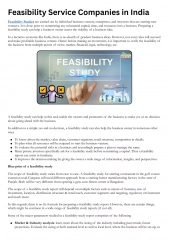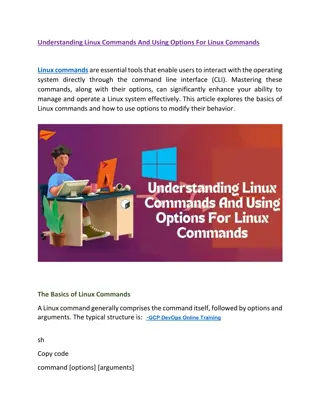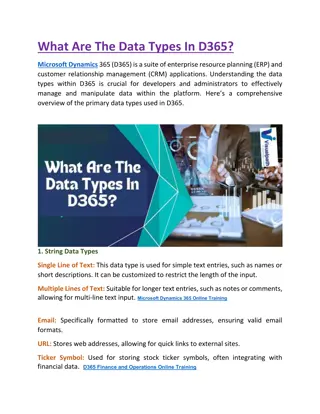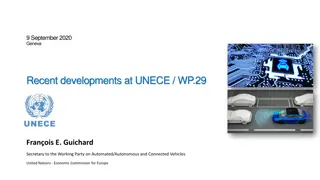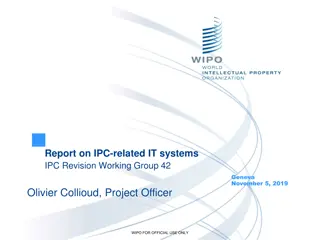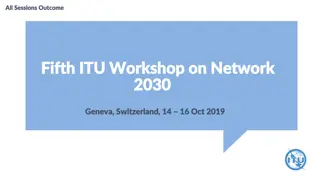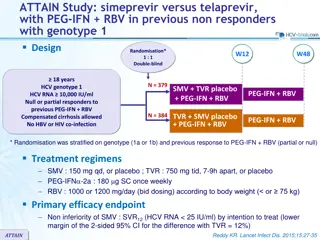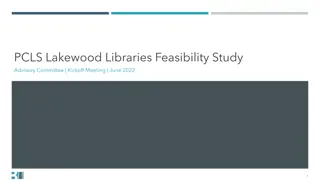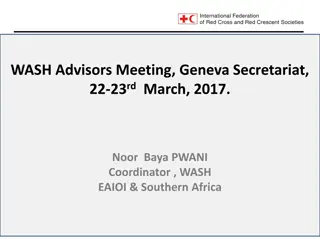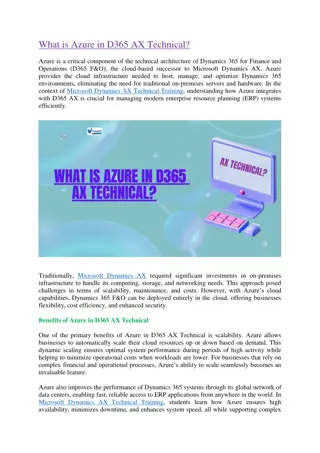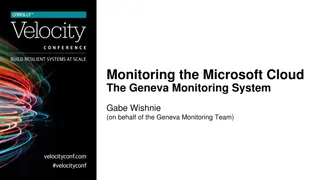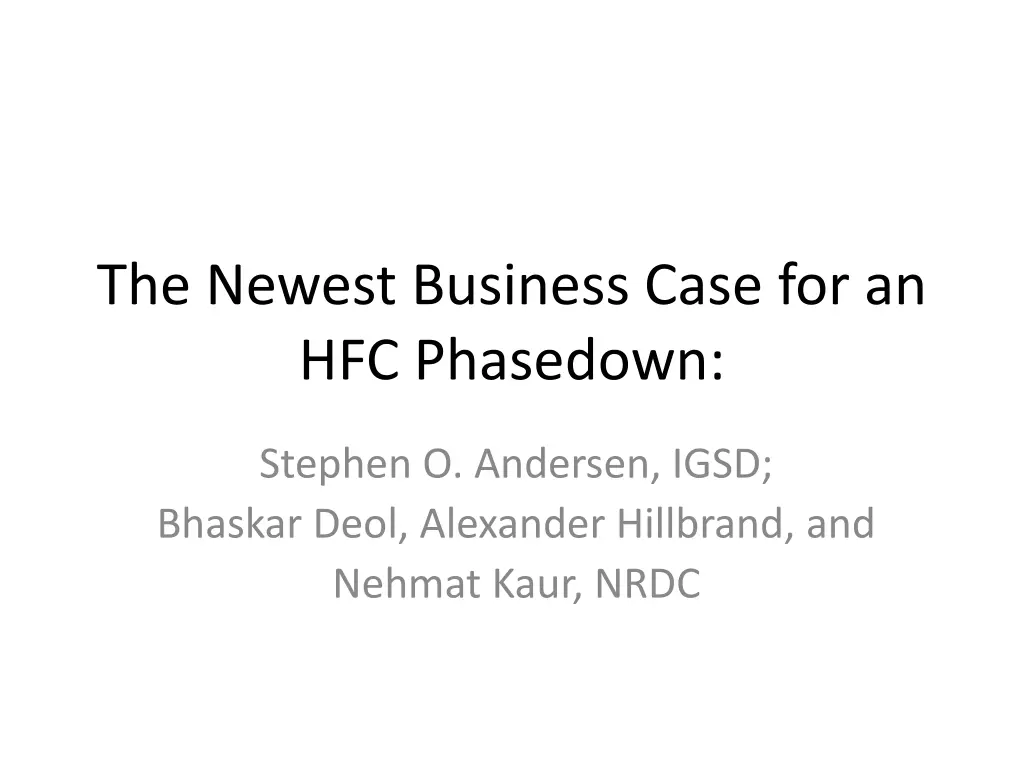
Business Case for HFC Phasedown: Key Insights and Market Trends
Discover the latest developments in the phasedown of HFCs, including challenges with current alternatives, regulatory progress worldwide, market trends, and robust evidence supporting the feasibility of transitioning to low-GWP alternatives. Explore the impressive market penetration of low-GWP technologies in different regions and the array of alternatives available.
Download Presentation

Please find below an Image/Link to download the presentation.
The content on the website is provided AS IS for your information and personal use only. It may not be sold, licensed, or shared on other websites without obtaining consent from the author. If you encounter any issues during the download, it is possible that the publisher has removed the file from their server.
You are allowed to download the files provided on this website for personal or commercial use, subject to the condition that they are used lawfully. All files are the property of their respective owners.
The content on the website is provided AS IS for your information and personal use only. It may not be sold, licensed, or shared on other websites without obtaining consent from the author.
E N D
Presentation Transcript
The Newest Business Case for an HFC Phasedown: Stephen O. Andersen, IGSD; Bhaskar Deol, Alexander Hillbrand, and Nehmat Kaur, NRDC
The Trouble with HFCs HFCs, especially R-410A, are inferior technical alternatives to HCFCs: High global warming potential (GWP) Poor energy efficiency and cooling capacity at high ambient temps Restricted in the US, EU, Japan, and other markets soon Requires new infrastructure that must later be abandoned and replaced
HFC Phasedown Well Underway Regulations in EU, Japan, and USA alone will achieve at least half of the phasedown of the EU and North American Amendment proposals AC technology to achieve EU and US phasedown will likely be manufactured in China and other A5 Parties and might as well be implemented worldwide as soon as available, affordable, and financed
Impressive Market Penetration Denmark long ago achieved impressive HFC phasedown with government ambition and industry leadership GIZ has implemented HC-290 room AC in China and India, with about 20 projects underway worldwide Japan, responding to Indonesia, commercialized HFC-32 room AC that now dominates the Japan market and is gaining market share worldwide Foam system houses worldwide now offer an increasing spectrum of low-GWP foam including hydrocarbon, methyl formate, and HFO
Robust Proof: Technical & Economic Feasibility TEAP confirms technical and economic feasibility of multiple options in most applications Independent analysis identifies emerging technology beyond that considered by TEAP Industry stakeholders in non-A5 Parties endorse stringent phasedown so long as under the Montreal Protocol with markets choosing technology to satisfy the control schedule US EPA SNAP roadmap increasingly aggressive
Planning for Manufacturers The MLF can finance flexible manufacturing facilities, capable of working with current and future alternatives for great flexibility for the HCFC phaseout and HFC phasedown Component and knock-down assembly kit companies can offer upgrades to HC-290 and HFC-32 Chemical producers can explore effective joint ventures with foreign enterprises
Room AC at High Ambient Temperature Oak Ridge National Laboratory tested room AC alternatives at high ambient temperatures (52 C & 55 C) HC-290 and HFC-32 are superior to R-410A
India Room AC Headstart First at HFC-32 ACs Mid-GWP with lower-charge High energy efficiency For use in larger units First at HC-290 ACs Low-GWP High energy efficiency For use in smaller units
Case Study: HC-290 Room AC HC-290 is GWP <5, highly flammable, low toxicity, and superior energy efficiency even at high ambient temperatures Satisfies EU regulation; ASHRAE/ISO Class A3 HC-290 is manufactured and marketed in India and China but has not yet satisfied national safety standards in most countries except for models with small charge and cooling capacity China has revised its HPMP with at least 17 companies planning to replace HCFC-22 in room ACs with HC-290 rather than R-410A
HC-290 Superiority First choice wherever cooling capacity, energy efficiency and safety are satisfied Endorsed by many environmental NGOs and natural refrigerant advocacy organizations Promoted by GIZ with years of experience and impressive technical support at all levels (design, manufacture, installation, and service) Path-breaking in motivating reconsideration of how flammable refrigerants can be safely used
Case Study: HFC-32 Room AC (1) HFC-32 is GWP 675 with 30% lower charge, slightly flammable, low toxicity, and superior cooling capacity and energy efficiency even at high ambient temperatures SNAP listed, satisfies EU regulation, ASHRAE/ISO Class A2L At least five Parties (Algeria, China, Indonesia, Thailand, & Tunisia) have revised their HPMPs to replace HCFC-22 in room ACs with HFC-32 rather than R-410A
Case Study: HFC-32 Room AC (2) Every Japanese manufacturer shifted from HFC- 410A to HFC-32 for sales in Japan and all have achieved high energy efficiency HFC-32 Room ACs are manufactured in China, India, Indonesia, Japan, Malaysia and soon Thailand and are sold in 47 countries: Albania, Australia, the European Union 28, India, Indonesia, Japan, Malaysia, Montenegro, New Zealand, Norway, Philippines, Russia, Saudi Arabia, Singapore, Taiwan, Thailand, Turkey, UAE, Ukraine and Vietnam (millions already sold)
HFC-32 Room AC: Multiple Brands in Many Markets Australia: Daikin, Electrolux, Fujitsu General, Gree, LG, Midea, Mitsubishi, & Panasonic European Union: Carrier, Daikin, Haier, Midea, Panasonic, & Toshiba India: Bluestar, Daikin, Fujitsu General (joint venture), & Mitsubishi Indonesia: Daikin, Panasonic & Sharp Japan: All Japanese AC manufacturers Thailand: Daikin & Panasonic (Saijo Denki soon) Vietnam: Daikin & Fujitsu General
Room AC Super-Efficiency Challenge Super-Efficient Room ACs manufactured in China, Europe, Japan and the Republic of Korea are offered only is selected markets The Room ACs offered in most developing countries are far less energy efficient despite often high electricity price, inadequate electricity supply, and long cooling seasons The added cost of lower carbon footprint could be financed, complemented by energy standards, labeling, and consumer education
Take Home Messages Plenty of alternatives in foam, room AC, refrigeration and other applications immediately available once the Amendment and A5 finance is in place Non-A5 domestic regulations and Amendment phase-down schedules will commercialize more options well in advance of A5 schedules Energy savings from Super-Efficient room ACs can avoid new power plant construction, offset added product costs and provide co-benefits including clean air, human health, and productivity
Case Study HFO-1234yf in MACs Every automobile manufacturer has selected HFO- 1234yf to replace HFC-134a in MACs by 2017 in EU and 2021 in USA; dozens of models, millions sold Automobile manufacturers in China and India have built successful HFO-1234yf prototypes and are ready when MLF finance is available Navin Fluorine and Honeywell just announced a licensing agreement with production in India by year s end Carbon dioxide will be introduce by Daimler and HFC-152a is consideration for heavy trucks, off-road and in automobiles with secondary-loop systems
Funds and Financing Canada and USA have pledged phase down financing as soon as the HFC Amendment is signed Fast Action Funds can: Strengthen the national ozone unit, industry associations, and standards organizations Train technicians and provide tools to reduce HFC emissions from current sources like MACs Link appliance manufacturers with suppliers of next- generation, climate-friendly components
Patent Protection of Room ACs Refrigerant Production Patent? Application Patent? Relative Price R-410A Mostly Expired Mostly Expired High HFC-32 Expired Released Medium HC-290 Expired None Low HFO blends Yes Yes High
Selected References (1) 1) Zieger, Bastian. Co-benefits of RAC Sector Transformation. Oeko-Recherche. New Delhi, India, 7 November 2014. 2) Abdelaziz, Omar et al. Alternative Refrigerant Evaluation for High- Ambient-Temperature-Environments. Oak Ridge National Laboratory. October 2015. 3) Andersen, Stephen O. et al. The Business Case for Phasing Down HFCs in Room and Vehicle Air Conditioners. CEEW, IGSD, NRDC, and (TERI) June 2013. 4) Carvalho, Suely, et al. Alternatives to High-GWP Hydrofluorocarbons. IGSD and OzonAction 2014.
Montreal Protocol Protects Climate! Montreal Protocol has provided 10 climate protection that Kyoto seeks Montreal Protocol has provided 10- -11 times climate protection that Kyoto seeks 11 times From: Velders Guus J. M., Stephen O. Andersen, John S. Daniel, David W. Fahey, and Mack McFarland, Proceedings of the National Academy of Sciences, published online Mar 8, 2007. From: Velders Guus J. M., Stephen O. Andersen, John S. Daniel, David W. Fahey, and Mack McFarland, The importance of the Montreal Protocol in protecting climate; Proceedings of the National Academy of Sciences, published online Mar 8, 2007. The importance of the Montreal Protocol in protecting climate;
Low-GWP Substitutes Help Avoid Irreversible Climate Change Guus J. M. Velders, A. R. Ravishankara, Melanie K. Miller, Mario J. Molina, Joseph Alcamo, John S. Daniel, David W. Fahey, Stephen A. Montzka, & Stefan Reimann, Preserving Montreal Protocol: Climate Benefits by Limiting HFCs, Science, 24 February, 2012, Vol. 335, pp 922-23.

